The Rajasthan Rural Arts Programme (RRAP) is an initiative of the Jaipur Virasat Foundation setup to promote sustainable heritage-based social and economic development to increase livelihood opportunities in Rajasthan.
RRAP Music Museum & Hub showcases the past, present and future of the living musical Rajasthani traditions. Visitors can witness the words and sounds passed through generations of Rajasthan's rural communities, meet the musicians still playing today, and see their remarkable handmade instruments expertly crafted from traditional knowledge. It is dedicated to promoting, disseminating, conserving, and repositioning the folk music traditions of Rajasthan. Centre stage are the rural musicians and musician communities of the region. Through exhibitions, outreach programs, residencies, workshops, and diverse events, the museum provides visitors with a gateway to the many different folk music cultures of Rajasthan for our new emerging India.
Recording Studio
The RRAP Studio powered by the RRAP Music Museum & Hub, is a key aspect of RRAP's vision for a global Rajasthani sound. It is a dedicated music recording studio for Rajasthan folk music and musicians delivering and disseminating high quality content to conserve, reposition and promote the music and musicians of the state. It was built to facilitate sound recording, mixing and audio production and foster collaboration and creativity.
Soundscape Garden
Artists Ritu Singh and Surya Singh of The Wolf created interactive sound installations out of scrap and discards at the hub. The installations Ritu and Surya created with help from students from IICD, Jaipur responded to the themes within the museum and deal with cultural history, use of material and give new life to materials.
Some artefacts in the museum are:
Algoza
Materials: sufi kair | Type: aerophone | Donor: Allahu Khan Langa
Algoza, a pair of end-blown double flutes is played by pastoralist musician communities like Bhils, Manganiyars, and Langas in the Marwar, Dhundhar and Hadoti regions. The instrument consists of a pair of flutes with six finger holes on each, which are simultaneously played while keeping vertically one in each hand, with three fingers on each flute. While one flute plays the melody, the other provides a drone.
Kamaicha
Materials: mango wood, goat leather, horse hair, goat gut, copper, steel | Type: chordophone | Donor: Darra Khan Manganiyar
Kamaicha, a bowed unfretted fiddle, found in the Marwar region, is the exclusive domain of the Manganiyars and is associated with their life-cycle ritual singing. The instrument functions as a solo instrument or to accompany a vocal melody. It has three gut strings and a number of sympathetic strings which resonate to produce sound. The mellow sound of the Kamaicha grounds the powerful and ecstatic higher register singing of the Manganiyars.
Mata
Materials: clay, goat skin | Type: Idiophone | Donor: John & Faith Singh
Mata is an instrument used in the performance of the Pabu epic by the Nayak Bhopas. It is a large parchment covered clay pot drum on which very intricate rhythms are beaten out. The drums are played in pairs and are tuned to a high and low pitch using water or heat.
Bhapang
Materials Used: Gourd, or mango wood | Type: idiophone | Donor: Jumma Khan Jogi
The Bhapang is played by the Jogi community of the Mewat region to accompany their devotional singing. It is a plucked instrument with a single metal string inserted through a skin head and a hollow cylindrical base. High and low pitch sounds are created by altering the tension of the strings.
Chang
Materials: mango wood, goat skin | Type: membranophone | Donor: Gopal Geela
Chang is used as a rhythmic accompaniment to the erotic songs and dances on the colourful occasion of Holi in the Shekhawati region of Rajasthan. This instrument has goat skin pasted on a large circular or octagonal wooden frame. It is played by both hands and occasionally by an additional stick.
Ravanhatta
Materials: Bamboo, coconut shell, horse hair, sheesham, Buffalo horns | Type : chordophone | Donor: Gulab Bhopa
Ravanhatha is an instrument played by Nayak Bhopas of the Shekhawati and Marwar region to accompany the performance of the ritual epic of Pabu. The instrument consists of a long necked bowed fretless fiddle with two or three playing strings and an arched bow with bells tied to it for rhythmic bowing.
26.9128093, 75.8046479
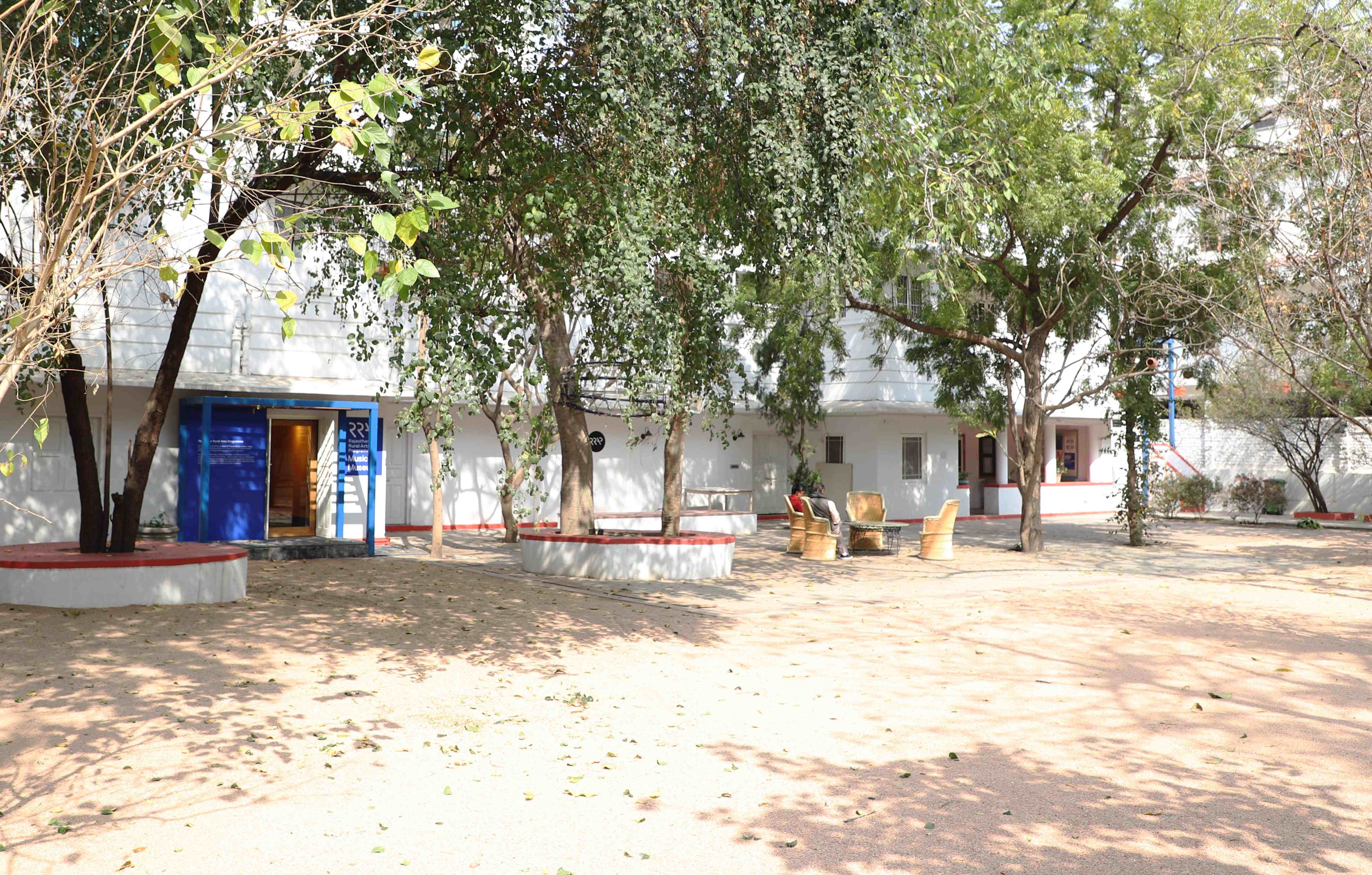
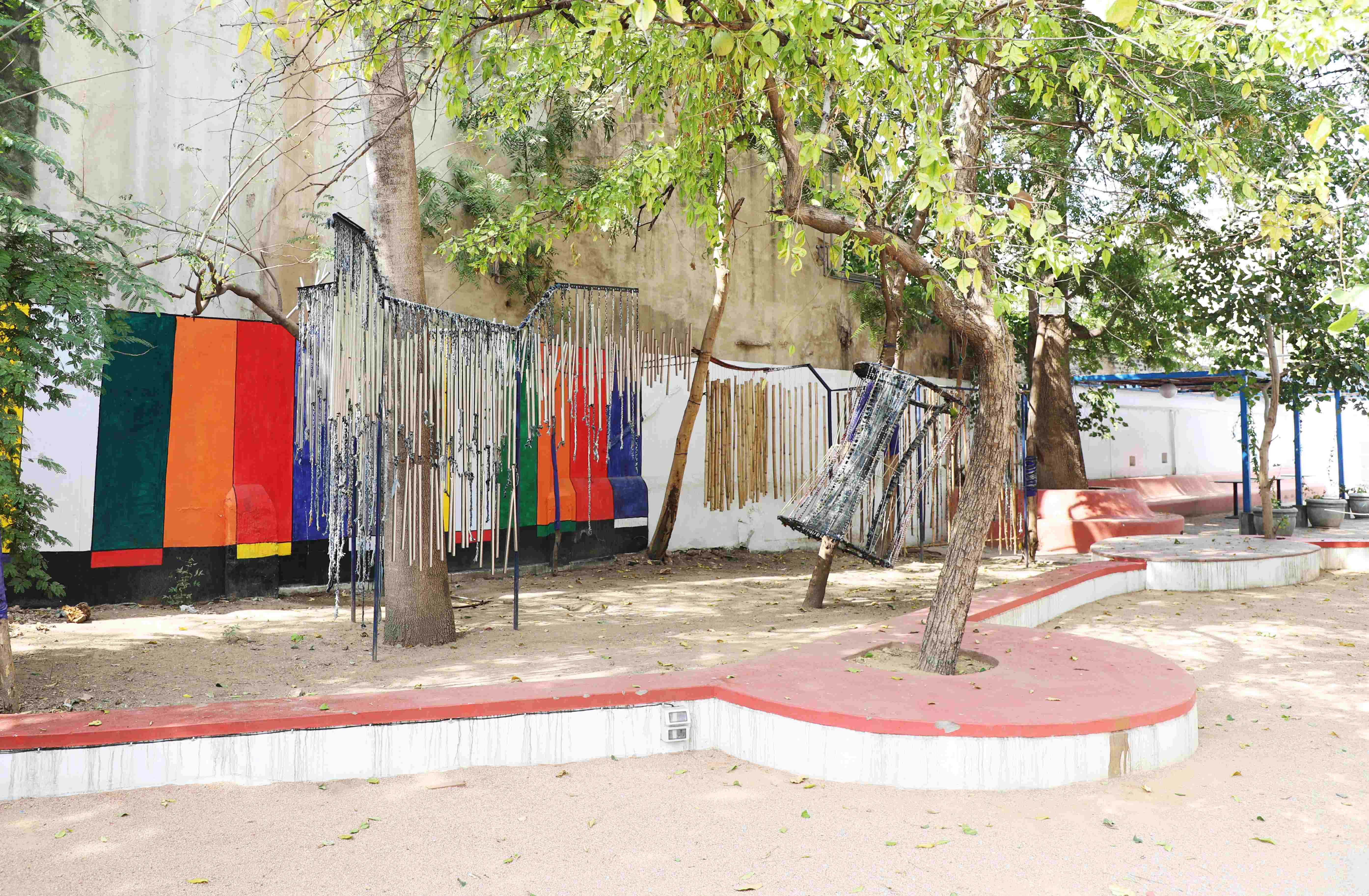

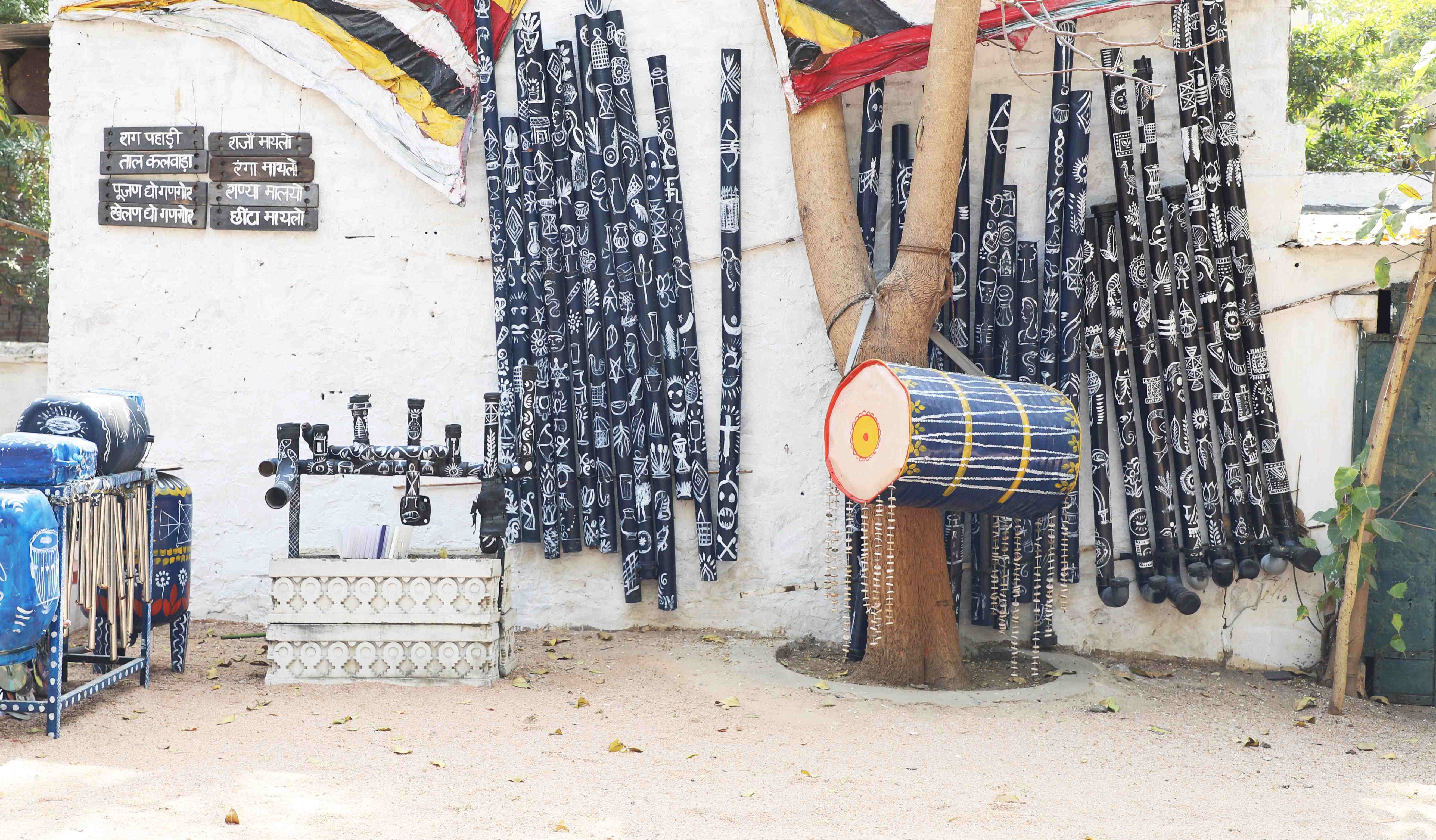
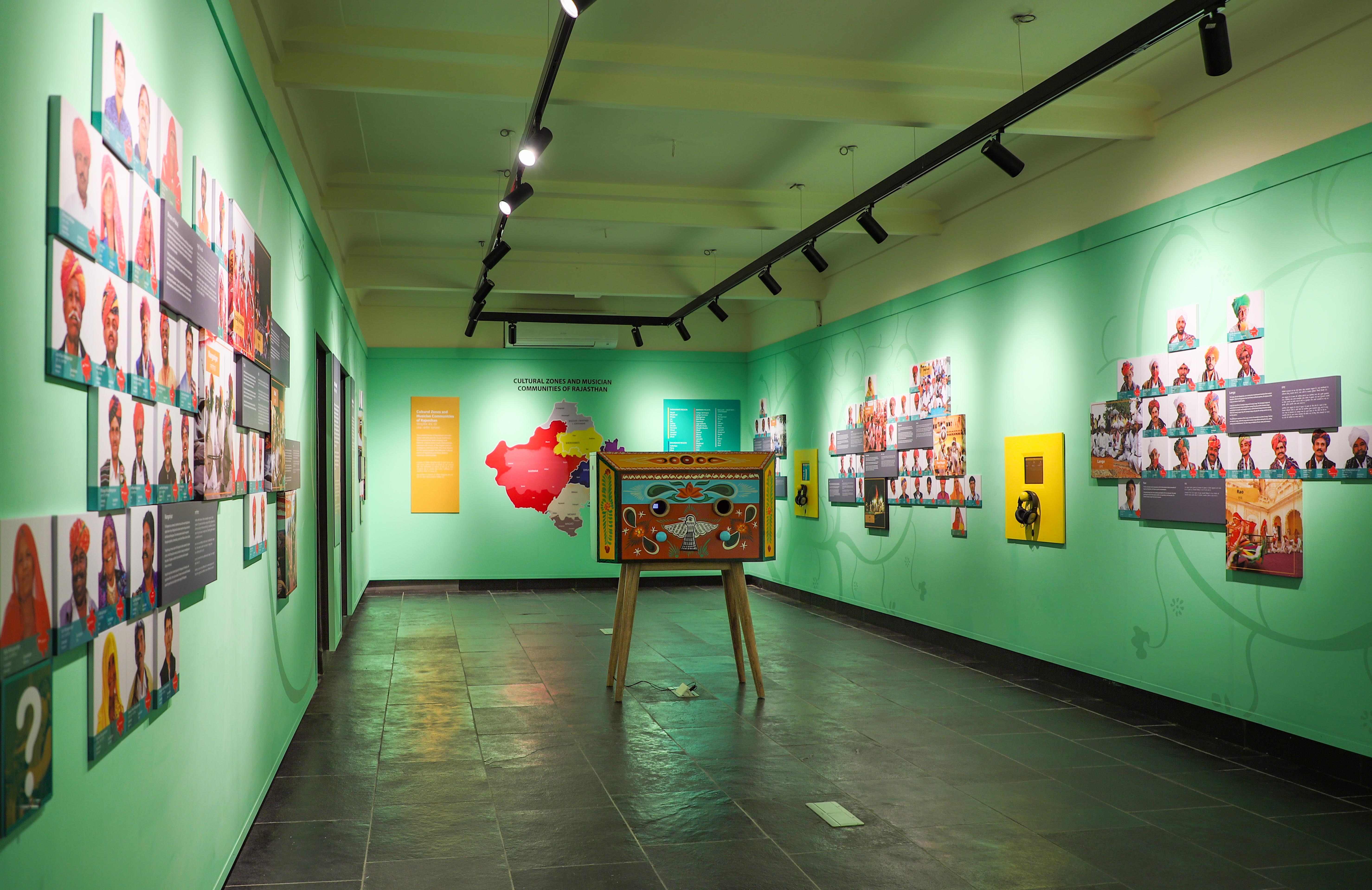
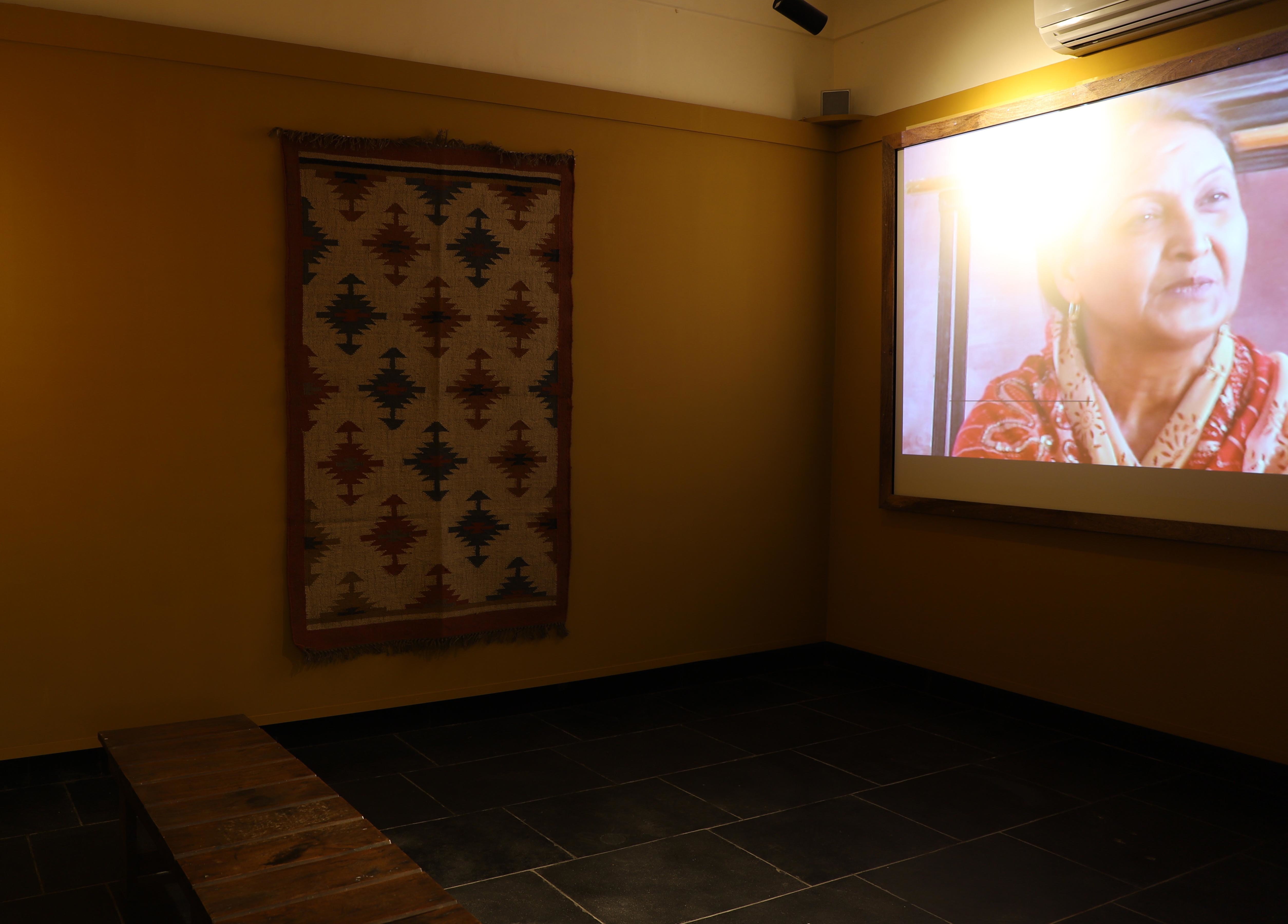
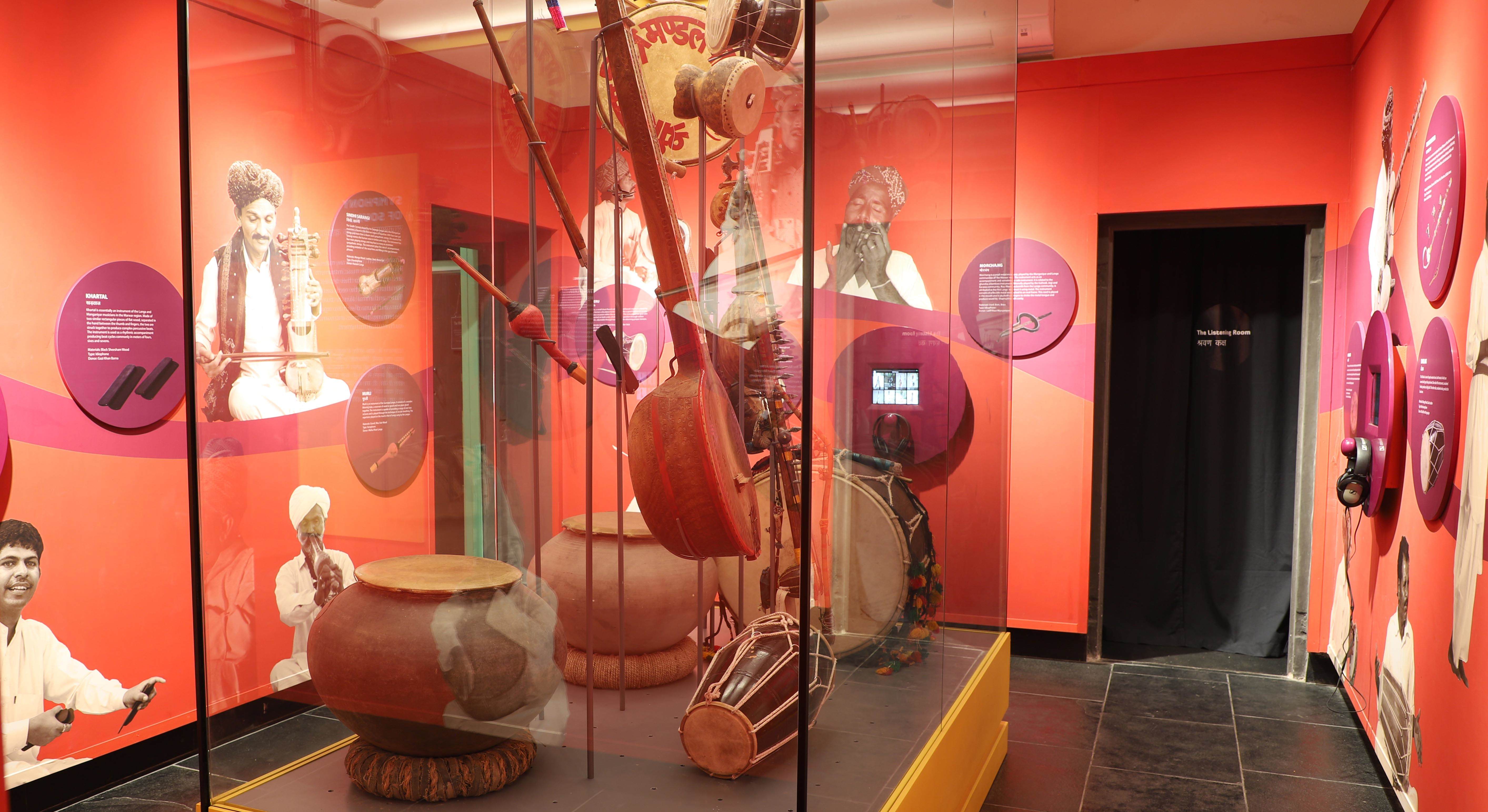
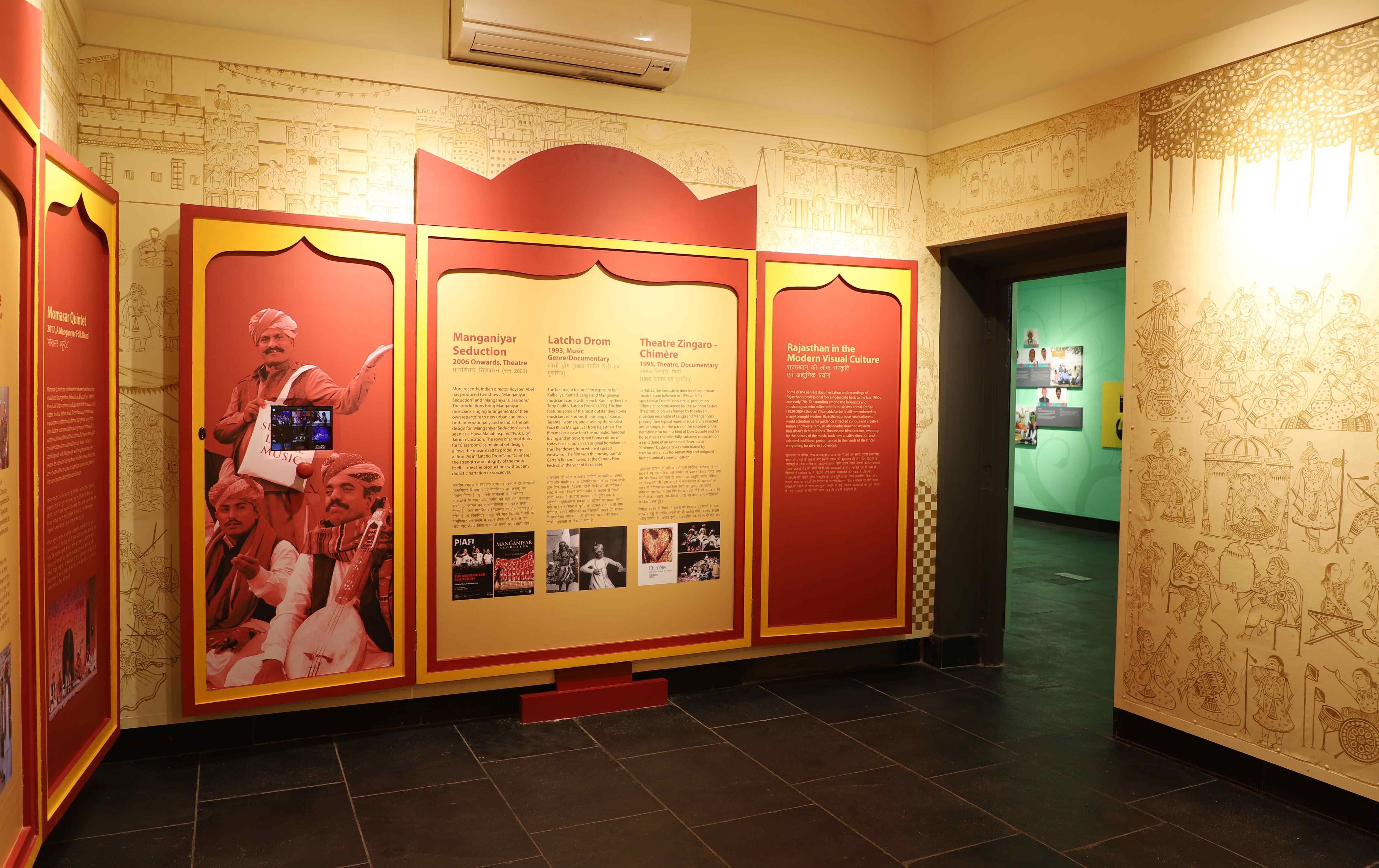
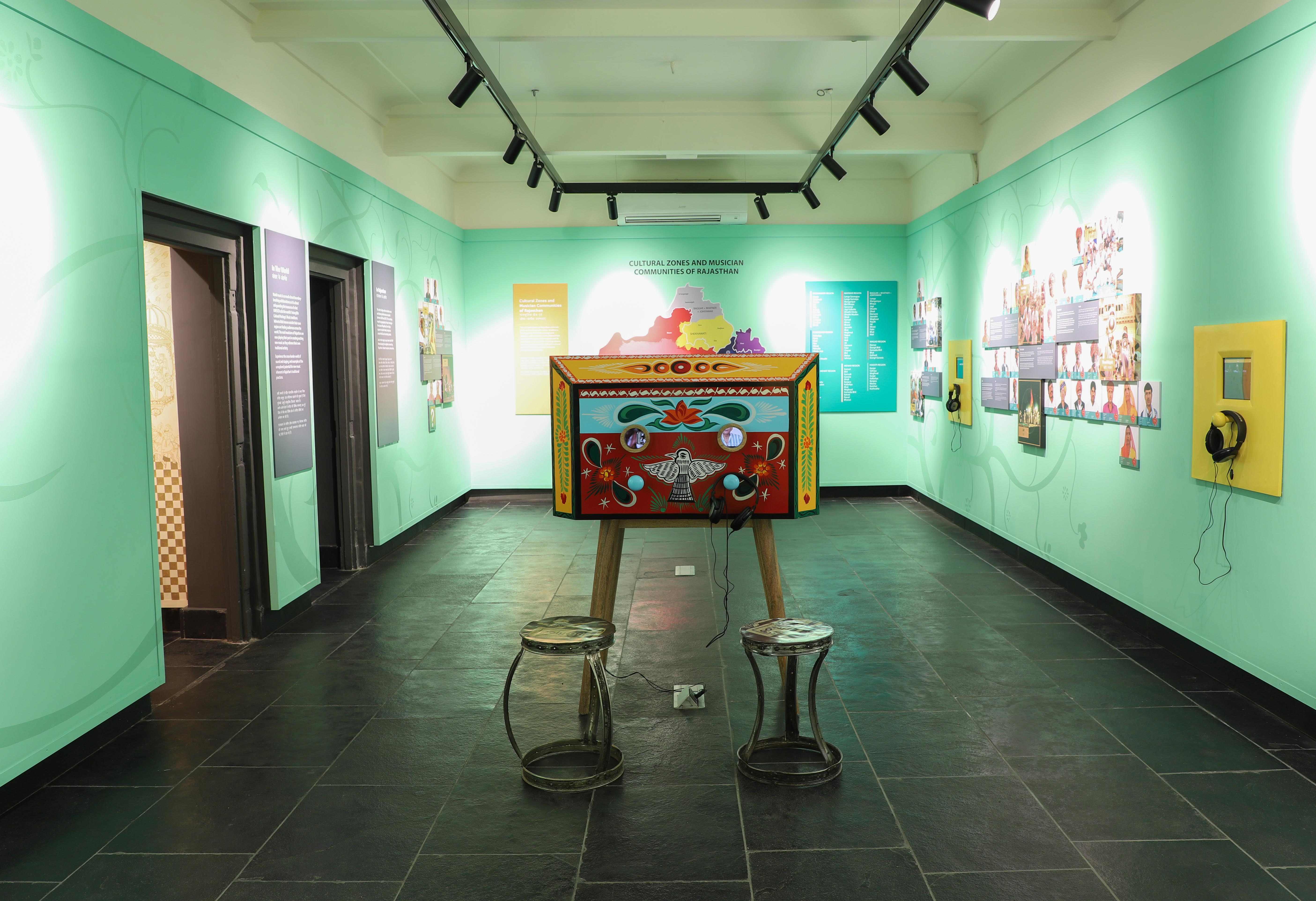
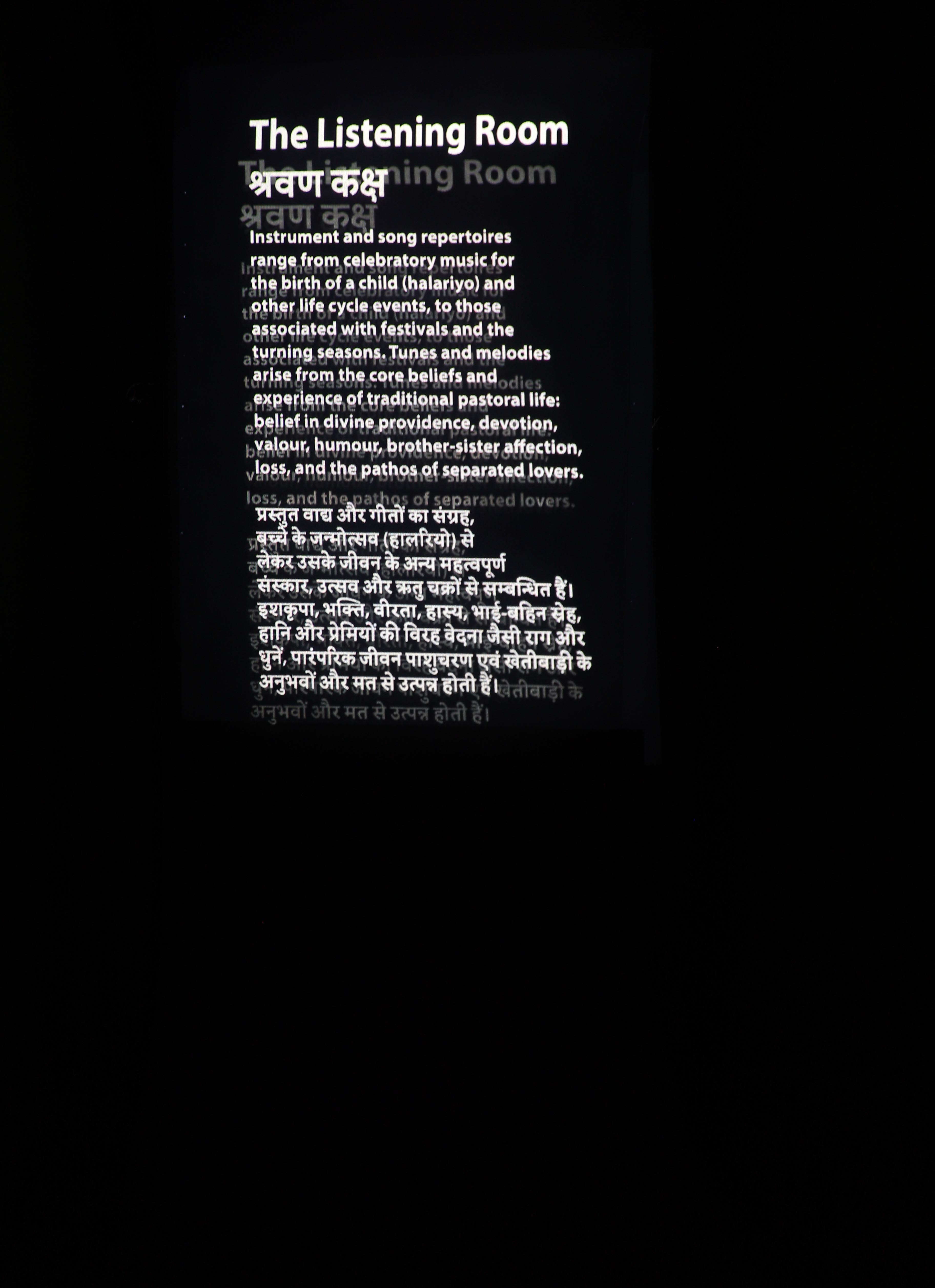
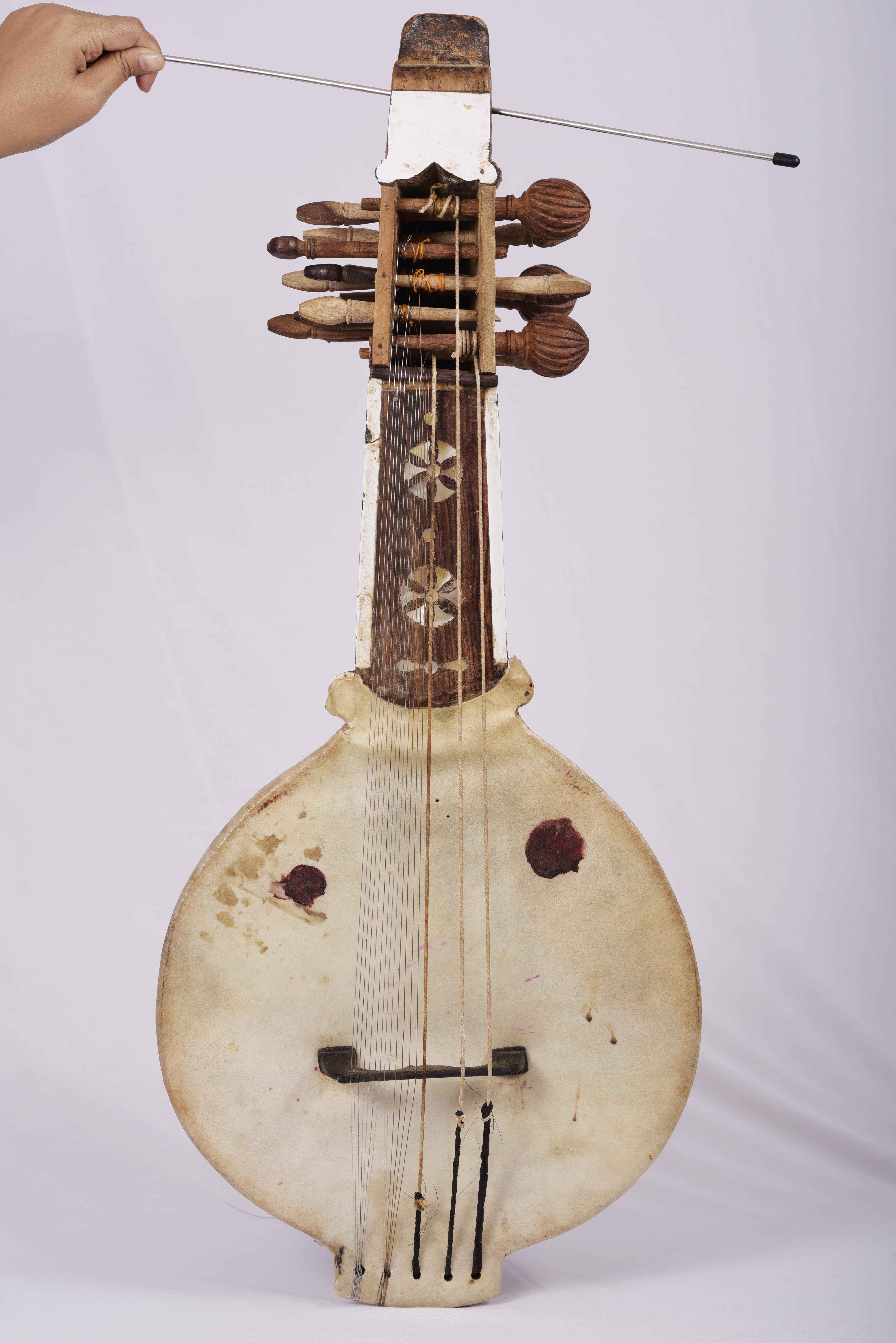
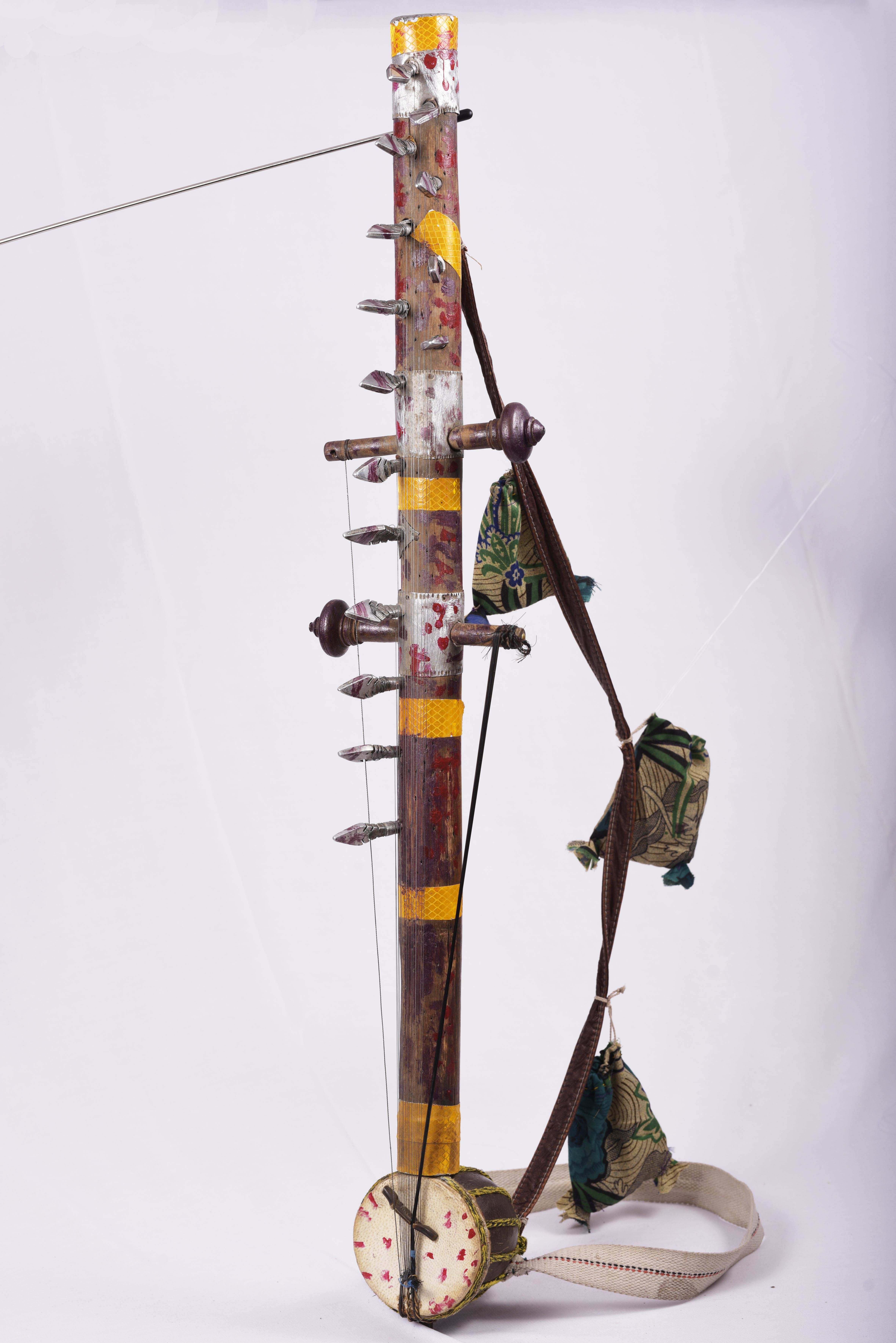
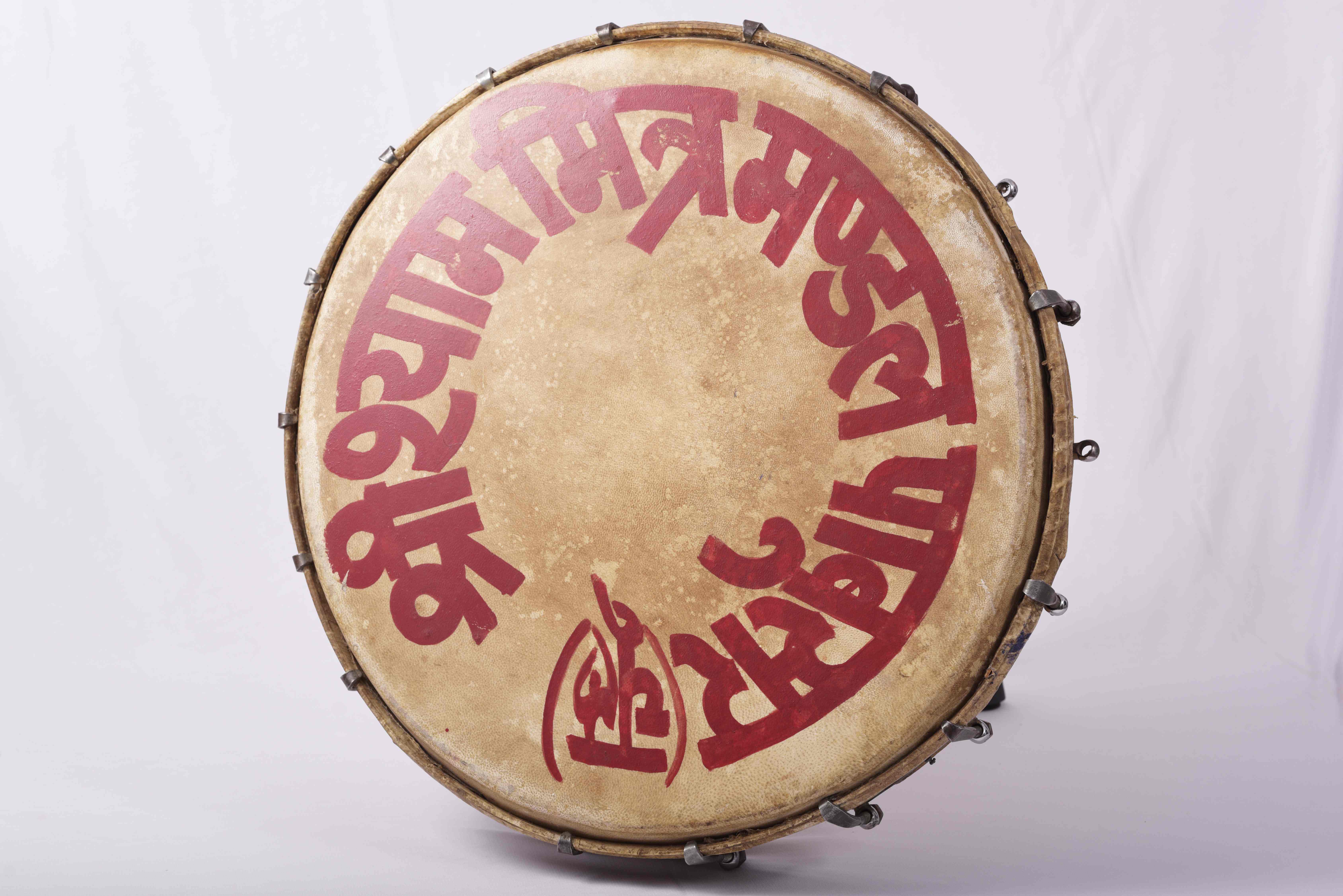

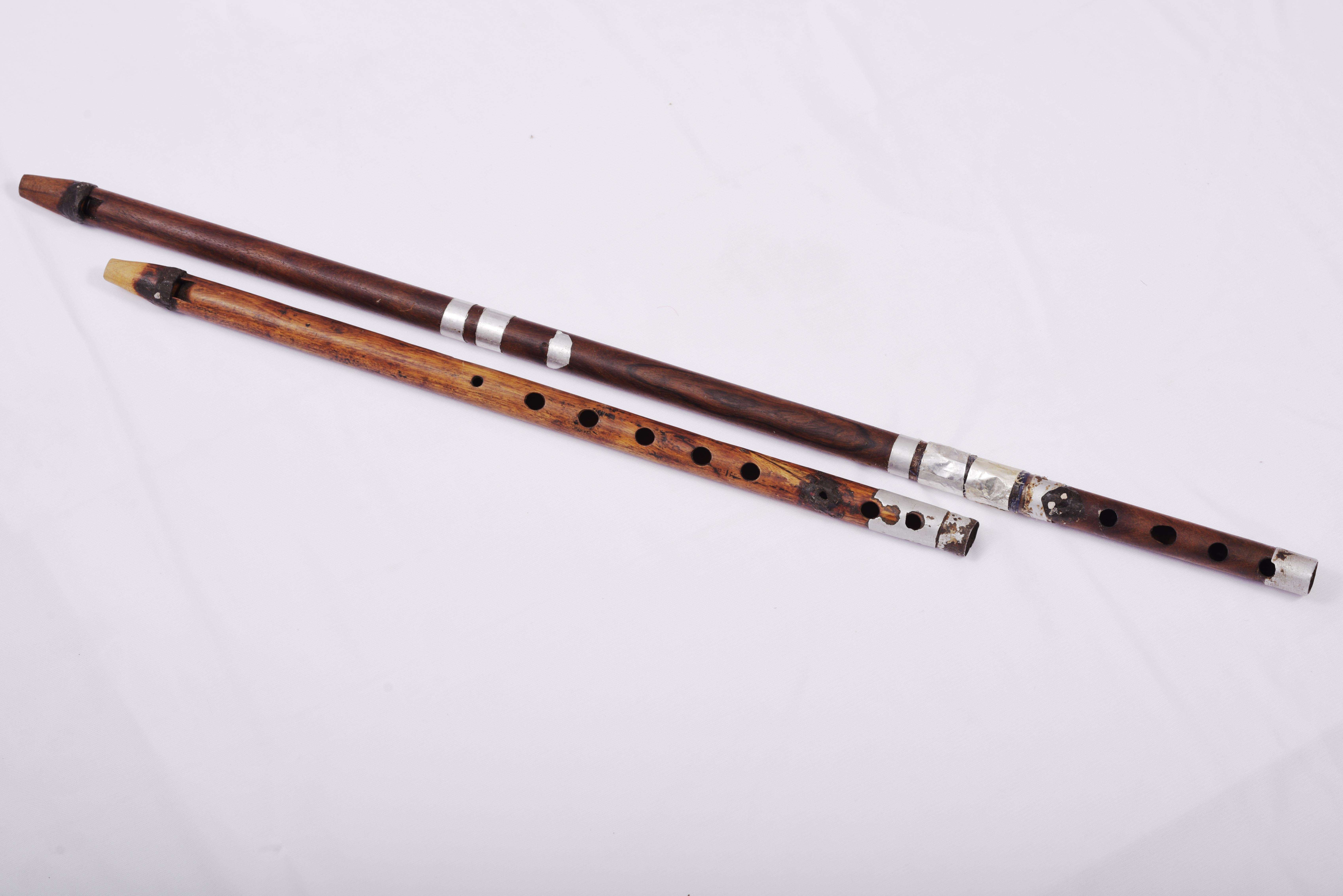
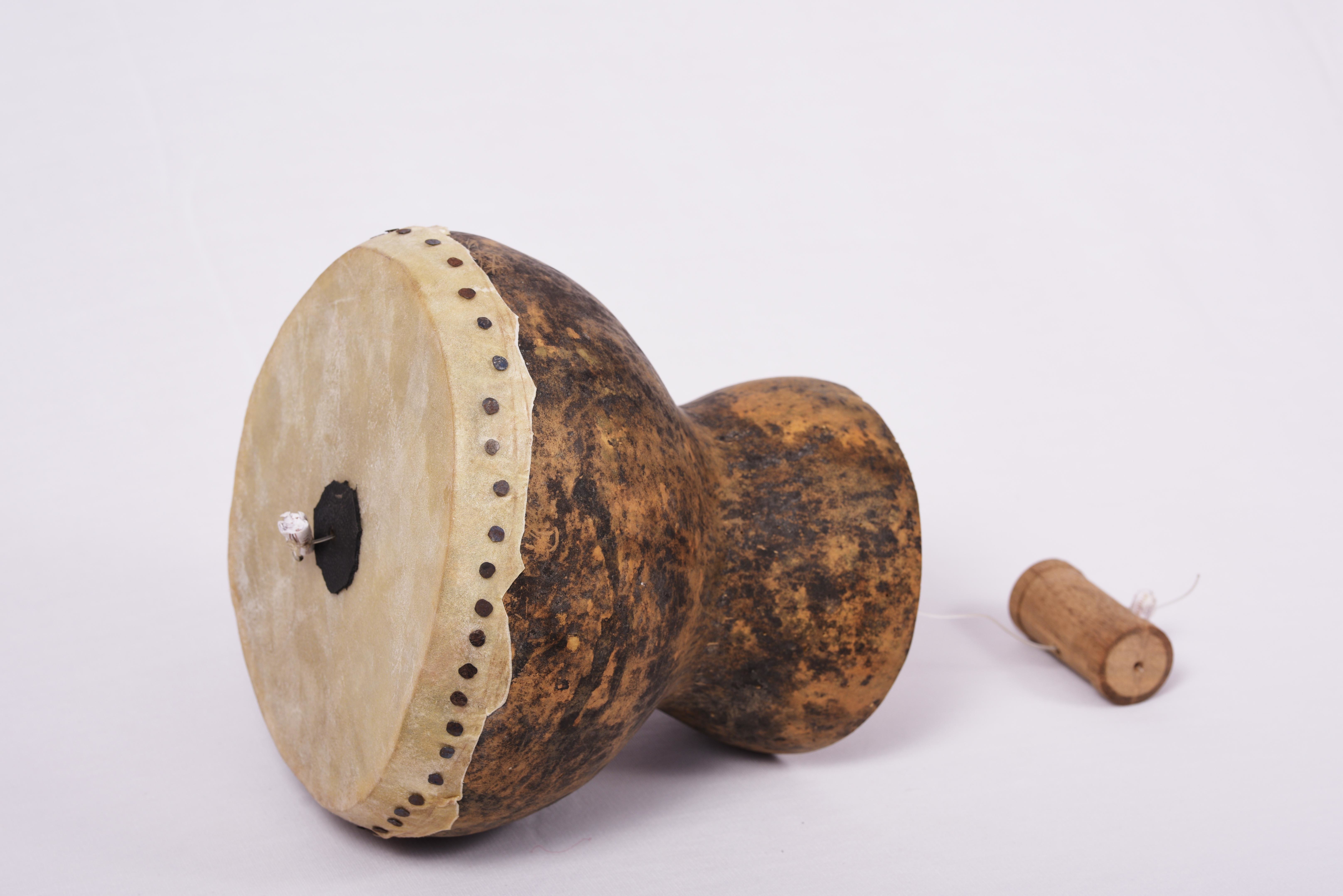
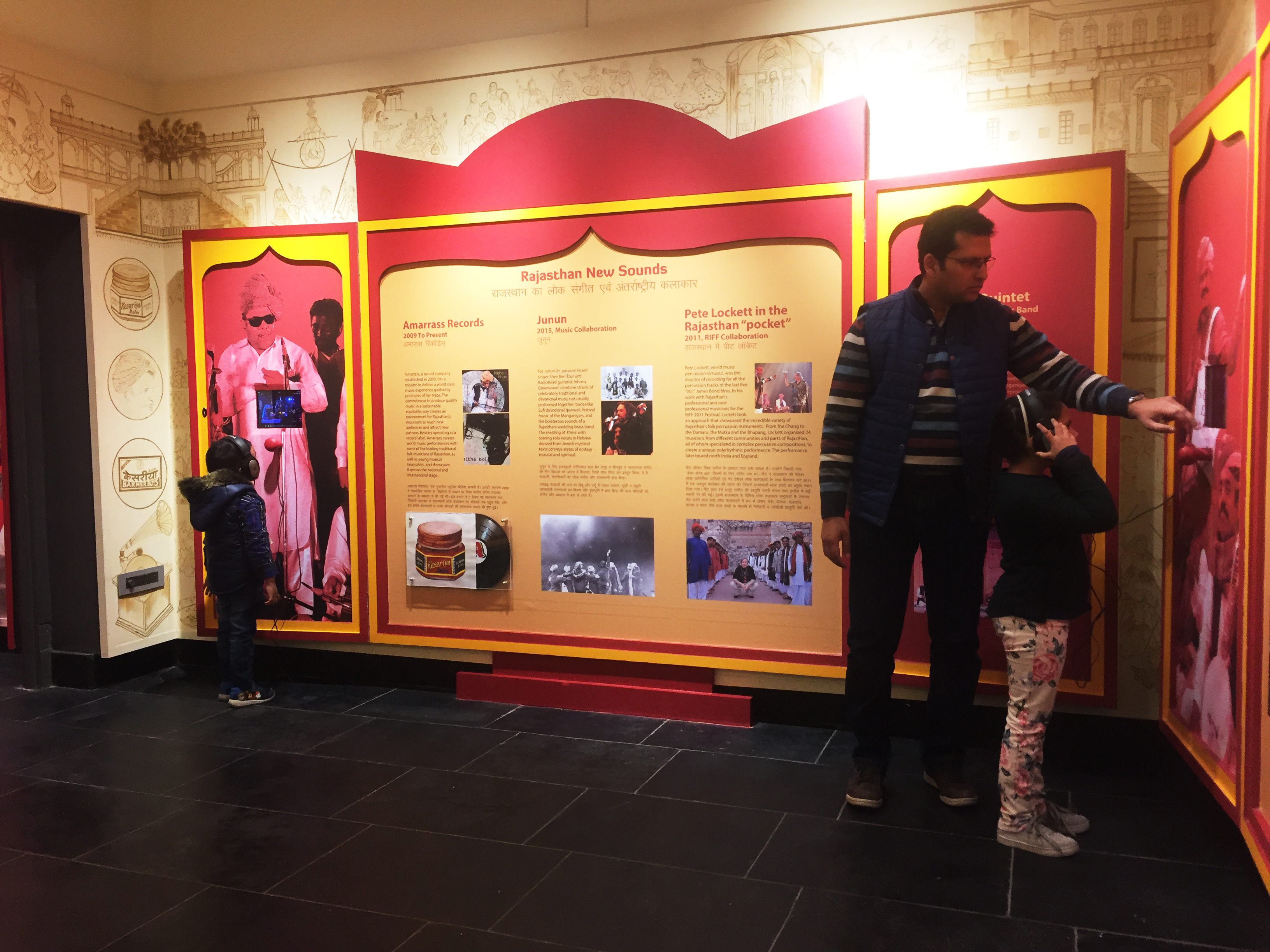


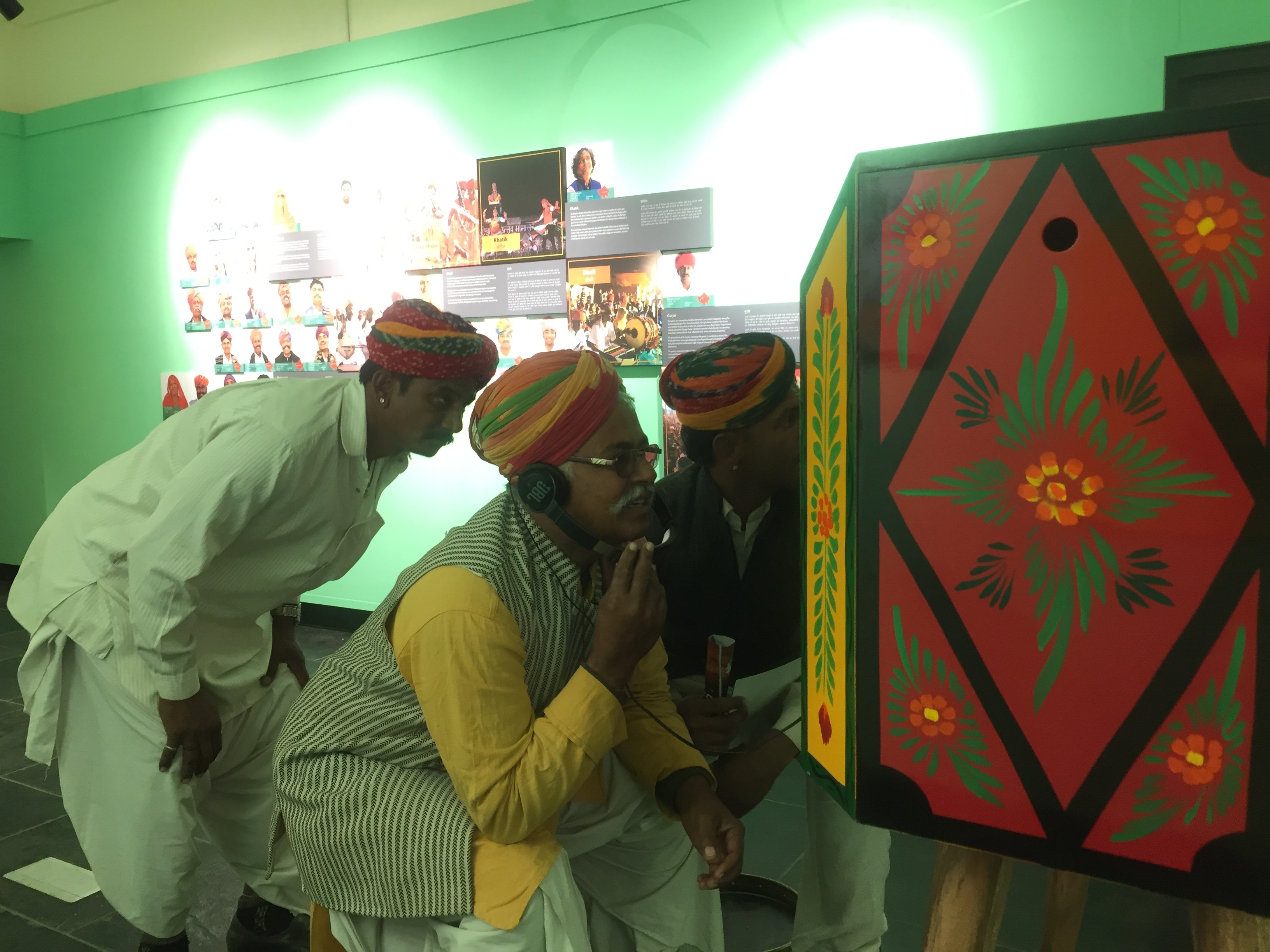

Student Donor Pass: INR 50
Entry to children below 12: free
RRAP Soundscape Garden has interactive and repurposed sound installations out of scrap and discards. The installations respond to the themes within the museum and deal with cultural history, use of material and giving new life to materials.
The museum has a dedicated music recording facility for folk artistes and others. It is built to facilitate sound recording, mixing and audio production and to foster collaboration and creativity.
